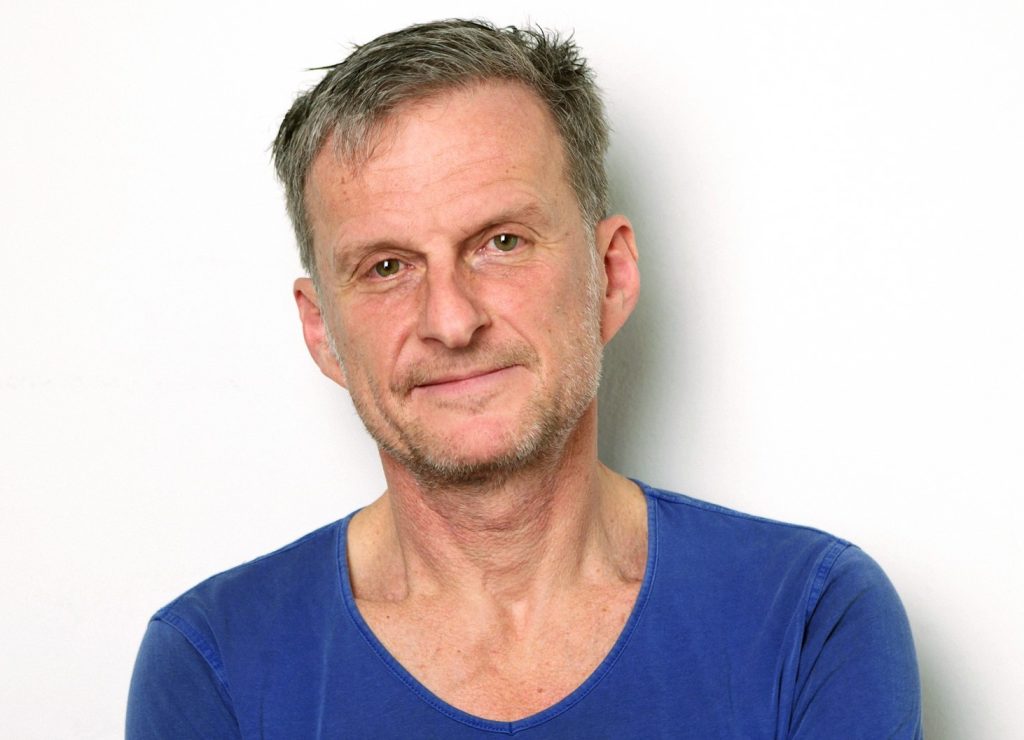
- News
Interview: Willi Dorner about every-one
Willi Dorner’s history with SPRING goes all the way back to 2001, when SPRING was still Springdance. Back then, the Austrian choreographer presented the experimental choreography Mazy, and the exhibition feet of contemporary choreographers together with Lisa Rastl. After 17 years Willi Dorner returns to SPRING with the performance every-one, where he brings revue dances to the streets of Kanaleneiland. With this choreography he draws a parallel between the 1920s, characterized by rapid developments based on standardizations and seriality and the starting point for modern urban life. Dorner is very interested in the relationship between architecture and the body, which regularly returns in his works, such as his world famous work bodies in urban spaces.
How did you start out as a choreographer?
“I actually started as a dancer. When I was younger I had to make the decision if wanted to study fine arts or dance, and I decided to go for dance. This was quite difficult during the 80s in Austria. There was not really much going on. Because of this, I had to work a lot abroad and get classes and information about dance somewhere else in Europe. But then I actually started to dance and became more interested to study dance therapeutics and movement analysis. First I worked with Nina Martin in New York and later with Mark Tompkins in Paris. In the middle of the 90s I decided to return to Austria and I started to work as a choreographer in my home country.”
What was the starting point to create every-one?
“I’m very interested in architecture, architecture history, and history in general. It’s my hobby, and I often use it as my source for choreographies. In the case with every-one, my main source was architecture history. I was reading about the 20s: a very interesting time for Bauhaus architecture. Through Bauhaus I realized what significant impact the 20s had on Europe.”
What was this impact?
“In the beginning of the last century, serial production in the economy became an esthetic principal in the arts. I found this very interesting. I looked at all these outcomes and one very dominant outcome is actually the revue, the show dance of the 20s. The legs of the women who perform the show dance are all synchronized. It is very precise machinelike dancing. I was fascinated by this. Different theories say this dance reflects the serial production in the economy. For me, one aspect is the uniformity, and also the multiplication of the same type. When you look at all these girls, they have the same height, slim body type, same length of legs and arms. This standardization became really important during that time. Also all these dancers in uniform outfits became a symbol of a new collective being.”
Why have you chosen to show revue dancers in today’s public space?
“What I would like to point out with the performance is that I can see a lot of the same developments of urbanization and standardization that are happing now. Of course the current developments are totally different from the 20s in terms of technology. But I see a lot of parallel developments of which I want to make the audience aware of. We take a look into history and see how this is mirroring our time.”
Why have you chosen Kanaleneiland as the location for the performance?
“This performance is entertainment for everybody, but it is especially for people with a lower income because of the underlying political aspect. I wanted to place this performance in an area where there is lower social housing. In the beginning of May we will do the performance Vienna, in the residential area of the social democratic ‘palaces’ which were built in the 20s. More than 5000 people fit in these gigantic buildings (Vienna built social housing for the countless workers who came to Vienna. The social housing functioned as a city within a city [red.]) After that the performance moves to a more posh area to show the big contrast. Sometimes in bigger cities it is hard to find this contrast, because the districts are too big and it takes too long to walk from an interesting area to the next. So sometimes we stay in one area because it’s impossible to walk so far.”
What will the audience experience when walking through Kanaleneiland?
“While walking through Kanaleneiland, the audience will experience their own city like they never have before. The walk will strengthen their bond to the city, and the audience will feel more connected to the performance that takes place there. You connect stronger to something when you experience it on location.”
• every-one can be seen in Kanaleneiland (starting point Trumanlaan 60a) on Sunday 20 and Monday 21 May. Click here for tickets.